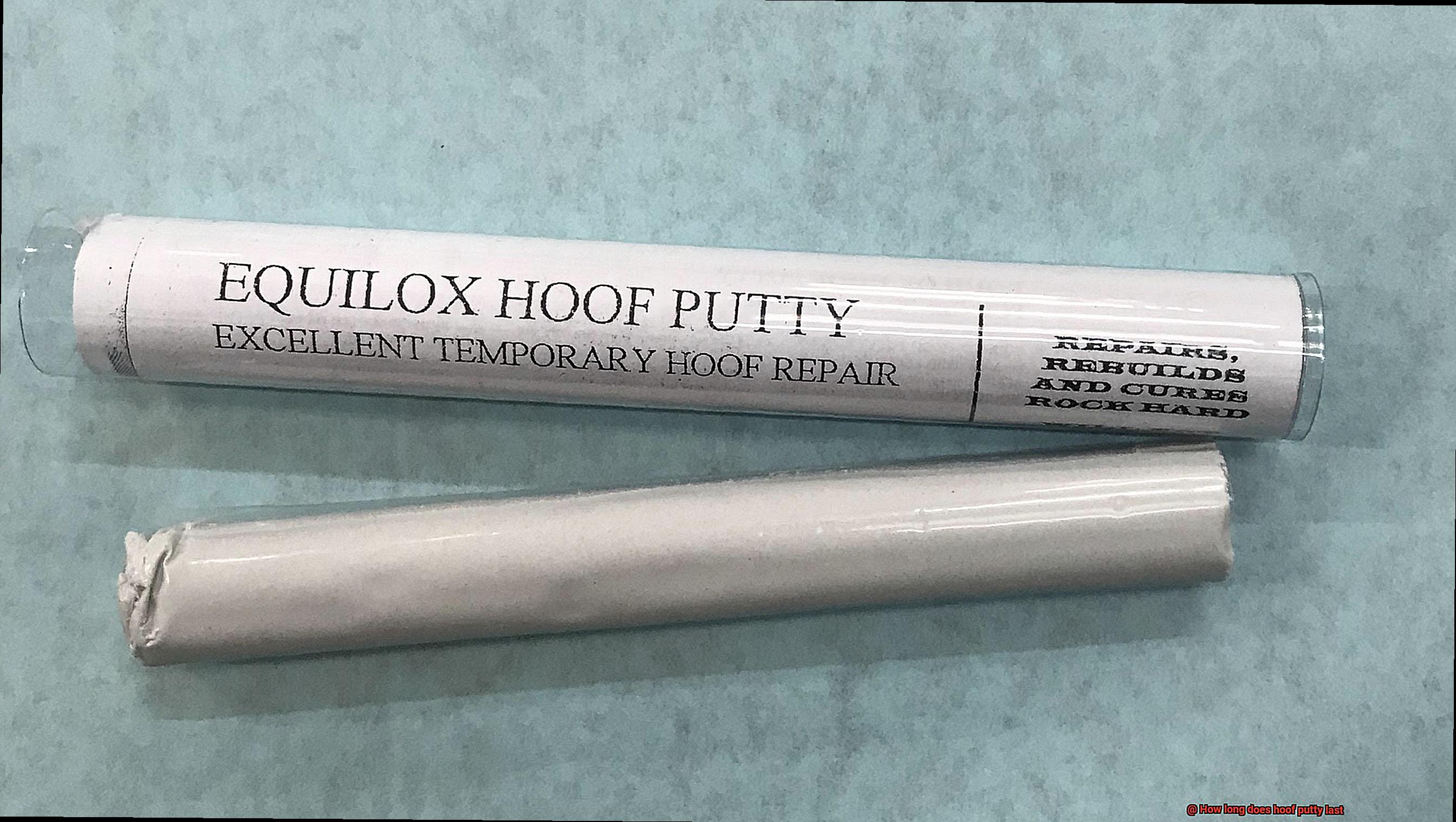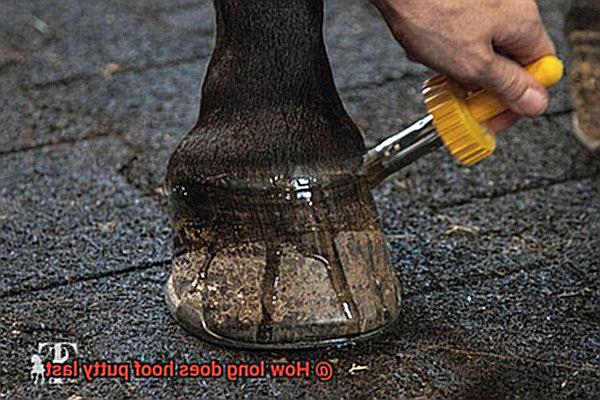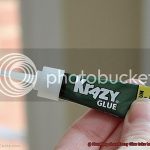As a horse owner or farrier, you know that hoof putty is a lifesaver for equine friends suffering from cracked hooves or abscesses. But when it comes to using this product, one question always lingers – How long does hoof putty last?
It’s a crucial question to ask, particularly if you’re new to using this product. The lifespan of hoof putty depends on several factors, including its composition, the environment, and the level of activity your horse is involved in. However, with proper care and use, hoof putty can last for an extended period and provide much-needed relief to horses struggling with hoof problems.
In this article, we’ll answer all your questions about how long hoof putty lasts. We’ll also give you tips on how to use and store the product effectively to ensure it lasts longer. So whether you’re an experienced equestrian or just starting out on your equine journey, keep reading.
What is Hoof Putty?
Contents
Hoof putty can be made from a range of materials, including epoxy, silicone, or synthetic polymers. The chosen material must be durable enough to withstand the daily wear and tear of horses. Once applied to the affected area of the hoof, it can be shaped and molded to fit the contours of the hoof before hardening over time into a strong and durable surface.
The quality of hoof putty varies depending on various factors such as environmental conditions, the type of activity the horse engages in, and the quality of the product. Inferior-quality putty may crack or fall out after just a few days, while high-quality putty can last several weeks or months if applied correctly.
It is crucial to routinely inspect and maintain the affected area to ensure that the putty remains effective. Environmental conditions such as moisture or mud can cause the putty to deteriorate more quickly, so it is essential to keep the hooves dry and clean.
Apart from filling gaps and holes in hooves, hoof putty can also help treat abscesses or other hoof infections by providing a protective barrier that prevents dirt and debris from entering the wound. This allows for quicker healing and less chance of infection.
There are numerous brands and types of hoof putty available on the market each with its unique set of properties and advantages. Some are more flexible and easier to work with, while others are more rigid and provide a stronger bond. Additionally, some types of hoof putty may be more resistant to moisture or heat than others.
Factors Affecting the Longevity of Hoof Putty
Hoof putty is an essential tool for filling gaps or treating infections, but its longevity depends on several factors that you need to keep in mind.
To start, the quality of the hoof putty plays a significant role in determining how long it will last. When purchasing this product, opt for one that contains stronger binding agents and has a firm texture. It is worth investing in a reputable brand and checking for expiration dates before making your purchase.
Environmental conditions are another factor that can affect the longevity of hoof putty. Extreme temperatures, whether hot or cold, can cause the putty to dry out or become too hard to apply correctly. Therefore, it is vital to store the hoof putty in a cool and dry place when not in use. Additionally, water exposure can cause the putty to break down more quickly; therefore, it is crucial to ensure that the hooves remain dry when applying the hoof putty.

Lastly, your horse’s activity level also affects the longevity of hoof putty. Horses with a high level of activity or who regularly participate in high-impact activities may require more frequent applications of hoof putty than those with less activity. Regularly monitoring your horse’s hooves will help you determine when it’s time to reapply the putty.
The Quality of the Product
One essential tool for hoof care is quality hoof putty. But how do you determine the quality of the product you’re purchasing? Let’s dive deeper.
Ingredients are the foundation of any product, and hoof putty is no exception. The quality of hoof putty depends on the ingredients used to create it. Good quality hoof putty should contain high-quality, safe ingredients that can withstand exposure to different weather conditions. When shopping for hoof putty, always check the list of ingredients to ensure that they meet these standards.
The manufacturing process is another critical factor that can affect the quality of hoof putty. A well-manufactured hoof putty should be consistent in texture, easy to apply, and adhere well to the hooves. Reputable manufacturers invest in research and development to continually improve their products’ quality, ensuring that they meet these standards.
Proper storage is also crucial in preserving the quality of hoof putty. If stored correctly in a cool, dry place, it can last for an extended period without deteriorating. However, if exposed to high temperatures or moisture, its lifespan may be significantly reduced.
Environmental Conditions
One option is to use hoof putty. However, did you know that environmental conditions play a significant role in the longevity and effectiveness of hoof putty?
Let’s dive into the details. The temperature, humidity, and exposure to sunlight can all affect the durability and functionality of the putty. If hoof putty is exposed to high temperatures for an extended period, it can dry out and become brittle, which reduces its ability to adhere to the hoof surface. Similarly, high humidity levels can cause the putty to become soft and sticky, making it challenging to apply and shape properly. In addition, exposure to direct sunlight can cause the putty to degrade and lose its adhesive properties.
To ensure that your hoof putty lasts as long as possible, proper storage is key. Store it in a cool, dry place away from direct sunlight, and keep it in an airtight container to prevent moisture from getting in. When applying the putty, follow the manufacturer’s instructions carefully and work quickly to avoid exposing it to environmental conditions that could compromise its effectiveness.
Here are some additional tips to help you take care of your horse’s hooves:
- Regularly inspect your horse’s hooves for any signs of damage
- Use an appropriate trimming schedule to maintain proper hoof shape
- Provide a balanced diet that includes essential nutrients for hoof health
- Keep your horse’s living environment clean and dry
Activity Level of the Horse
One question that frequently arises is how a horse’s activity level impacts the longevity of hoof putty. Let’s dive into this topic and explore what we know.
Hoof putty can be a great solution for repairing and protecting your horse’s hooves, but it’s not a one-size-fits-all product. The effectiveness of hoof putty can be impacted by various environmental factors such as temperature, humidity, and sunlight. However, when it comes to determining the longevity of hoof putty, a horse’s activity level is a significant factor to consider.
Horses that are more active and spend a lot of time moving around will naturally wear down the hoof putty faster than those who live a more sedentary lifestyle. The constant movement and pressure on the hooves can cause the putty to wear out faster. Thus, it’s imperative to keep this in mind when applying hoof putty and inspecting your horse’s hooves regularly to ensure that they remain protected.
Additionally, the type of work the horse does can also affect how long the hoof putty lasts. For example, a horse used for trail riding may not wear down the putty as quickly as a horse used for jumping or dressage. This is because jumps and intense movements can put more pressure on the hooves, causing them to wear down faster.
Apart from activity level and type of work, the quality of the hoof putty itself can also impact its longevity. Higher quality putty made with durable materials will typically last longer than lower quality putty. Therefore, investing in high-quality products is always recommended.
It’s difficult to give a precise answer on how long hoof putty will last as it depends on various factors. However, with proper application and maintenance, hoof putty can last for several weeks or even months in some cases. Regular inspections and reapplication as needed can help ensure that the hooves remain healthy and protected.
How to Ensure Long-Lasting Hoof Putty
Improper care can lead to the putty breaking down quickly, leaving your horse vulnerable to injury. To ensure long-lasting hoof putty, here are five sub-sections to consider:
Proper Preparation
The first step to ensuring long-lasting hoof putty is proper preparation of the hoof. Clean the area thoroughly with a hoof pick and brush, and trim any excess or loose material. This will provide a stable surface for the putty to adhere to.
Precise Application
When applying the putty, follow the manufacturer’s instructions carefully. This may involve warming the putty slightly or mixing it with other materials. Apply the putty evenly, covering any cracks or chips in the hoof. Thin layers of putty should be applied, allowing each layer to dry completely before adding another.
Allow Time for Drying and Curing
Once applied, allow the putty sufficient time to dry and cure. Rushing this process can cause the putty to crack or break prematurely. Depending on the type of putty used and environmental conditions, this may take anywhere from 24-48 hours.
Regular Maintenance
Proper maintenance is key to ensuring long-lasting hoof putty. Regularly inspect hooves for signs of wear or damage, and apply additional layers of putty as needed. Keeping hooves clean and dry is also essential as moisture can cause the putty to break down more quickly.
Choose a High-Quality Product
Choosing a high-quality hoof putty made from durable materials can significantly extend its lifespan. Look for products that are designed to withstand wear and tear.
Regular Inspection and Maintenance
One crucial aspect of this is taking care of its hooves. Hoof putty is a popular product that helps protect the hooves from injuries and promotes healing of any existing damage. However, simply applying the putty won’t be enough to ensure its longevity. Regular inspection and maintenance are crucial for keeping the putty in good condition and promoting the health of your horse’s hooves.
Daily inspections are a must for any conscientious horse owner. During these inspections, make sure to thoroughly clean the hooves to remove any dirt or debris that may have accumulated. This way, you can identify any cracks or damages that may be hidden under the dirt. Regular cleaning will also ensure that the putty remains intact and doesn’t fall off due to dirt buildup.
While daily inspections are helpful, it’s also recommended to have a professional farrier examine your horse’s hooves every six to eight weeks. This way, you can identify underlying issues that may not be visible during daily inspections. The farrier can also assess the condition of the hoof putty and make any necessary repairs or replacements.
Regular maintenance of the hoof putty is also essential for ensuring its longevity. Reapplication every few weeks will help maintain its flexibility and prevent it from cracking or breaking off. The frequency of reapplication may vary based on weather conditions, activity level, and your horse’s individual needs.
7Z6pNC4r2K8″ >
Conclusion
In conclusion, hoof putty is a valuable asset for horse owners and farriers. It offers relief to horses experiencing cracked hooves or abscesses while safeguarding their hooves from further damage. However, the question of how long hoof putty lasts can be perplexing.
The longevity of hoof putty hinges on several factors, such as its composition, environmental conditions, and the horse’s activity level. With proper care and use, you can significantly prolong the life of your hoof putty. In some cases, it can last for weeks or even months.
To ensure that your hoof putty lasts as long as possible, it’s vital to choose a high-quality product made from durable materials. Proper preparation and precise application are equally critical in ensuring that the putty adheres correctly to the hooves. Allowing sufficient time for drying and curing and regular maintenance can help prevent premature cracking or breaking.
It’s essential to inspect your horse’s hooves regularly every six to eight weeks by both yourself and a professional farrier. This practice will enable you to identify any underlying issues that may not be visible during daily inspections.






